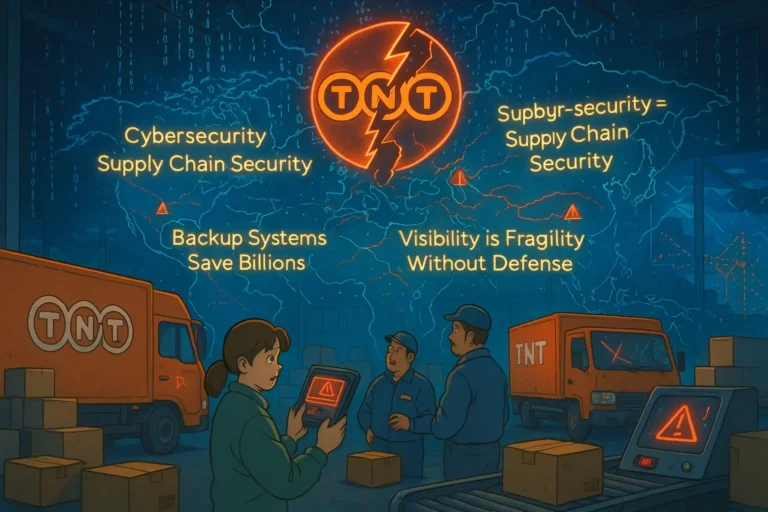
Fleet management can be one of the most strenuous processes a business might encounter in Africa, but luckily, there are tech solutions that make it easier.
When dealing with fleet management, there are many things to consider, making it a complicated operation.
You want to ensure the vehicles are in good shape, drivers are well-trained, and transportation is done on the best route. All while battling poor infrastructure, rising cost of fuel, and other fulfilment or delivery issues.
It can get cumbersome. This is why using tech solutions in the process is a no-brainer. With tech solutions, you can easily monitor fleet management for potential issues and attend to them as quickly as possible.
In this article, we will explore some of the tech solutions that can be useful to African businesses involved in the fleet management industry.
What is Fleet Management?
Fleet management is the coordination and maintenance of several vehicles so that they can transport goods and services effectively for a business or supply chain.
In Africa, you would be hard-pressed to find commodity businesses that do not have their own fleet or partner with a logistics company to help them with distribution.
This is why the transportation industry on the continent is booming. Logistics and transportation are massive facilitators of the African economy.
Fleet management tech solutions are applications or platforms that help with the planning, controlling, and coordination of fleets across the board.
Tech Solutions that can help African Businesses Simplify their Fleet Management
These tech solutions are designed to help businesses with their fleet management process, and they can be adopted in the African market.
1. GPS Trackers and Route Optimization Software
These two are some of the most in-demand applications for fleet management on the continent.
Trackers are tools and solutions that can help you track your vehicle to the exact location. It used to be widely inaccurate. But today, it can tell the exact location, including street and house number.
On the other hand, route optimization software helps transport goods and services by showing the driver real-time information on the best routes to follow.
With these two, businesses can have a solution for monitoring and optimizing their transportation process. The great thing about it is that these applications are easy to come by.
They are also cheap and, in most cases, free. All you need to manage them are a good internet connection and training for the staff in charge.
2. AI Dash Cam
It is one thing to monitor the vehicle but another to monitor the driver. This is where the AI dash cam comes in handy. It helps in the monitoring and analysis of driver behaviour while driving.
With these tools, it is easy to pick up on driver recklessness or incidence detection that can cost the supply chain or business some money.
With an AI dash cam, it is easy to capture situations or moments that can help in driver training. This is useful because teaching with real-life moments registers better on the students or staff.
It also provides proof of the incident, which could go a long way to prevent legal consequences.
There are many cases where people in accidents deny their contributions to the accident, whether it is your driver or the other driver involved in the incident.
3. Speed Breaker
Drivers tend to speed or get careless while they are behind the wheel. Speed breaker is an effective fleet management tool that helps you control the speed of your vehicle.
With a speed breaker, it becomes easier to ensure the drivers do not exceed a particular speed. This way, you can prevent accidents and control outcomes to a large extent.
If you have ever been behind the wheel, you will note that it is quite easy to get excited, especially when there is no one else in the vehicle.
With speed breakers, you are not just talking to the driver about not exceeding the speed limit. You are also ensuring the driver cannot go over the limit even if he/she gets tempted to.
4. Augmented Reality
These are tools that help in the maintenance of vehicles or the training of drivers and other fleet management staff.
It enhances images, videos, and scenes by overlaying digital information. With augmented reality, you can improve training programs and diagnosis of fleet vehicles.
It is an interactive experience that enhances real-world problems using computer-generated perceptual information.
A trainer can apply this to help drivers understand real-life scenarios before going on the road. It is also very common when training pilots and other air personnel.
5. Fleet Management Telematics
We have discussed some tech solutions in this article, and they all prop up the telematics solution. This is because telematics collects information from them and then analyzes them to determine asset use and optimization.
With telematics, you can gather data from other tech solutions to understand how any asset has been used and how much more it can serve you.
You are also able to analyze driver behaviours and explore ways by which you can get them to perform better.
This solution enhances a safer fleet, real-time updates, better insurance premiums, easy and timely maintenance, and overall cost savings.
Benefits of Tech Solutions in Fleet Management
There are multiple benefits of applying tech solutions in your fleet management.
𝟭. 𝗖𝗼𝘀𝘁 𝗮𝗻𝗱 𝗟𝗲𝗮𝗱 𝗧𝗶𝗺𝗲 𝗥𝗲𝗱𝘂𝗰𝘁𝗶𝗼𝗻: When used properly, these solutions will ultimately lead to a reduction in cost and the time it takes to deliver the goods and services. Some of these solutions might be expensive to implement initially, but they are well worth the cost.
𝟮. 𝗘𝗹𝗶𝗺𝗶𝗻𝗮𝘁𝗲𝘀 𝗥𝗲𝗰𝗸𝗹𝗲𝘀𝘀𝗻𝗲𝘀𝘀: Driver recklessness is a real issue on the African roads. With adequate tech solutions, you can reduce it or totally eliminate it. This will result in less accidents protecting the goods transported.
𝟯. 𝗚𝗲𝘁 𝗕𝗲𝘁𝘁𝗲𝗿 𝗜𝗻𝘀𝗶𝗴𝗵𝘁𝘀: You can collect accurate information on your fleet management process. Information such as fuel usage, number of incidents, or breakdowns are considered. With this, you can find ways to optimize the process better.
Challenges Businesses in Africa Face when implementing Tech Solutions in Fleet Management
There are common challenges businesses on the continent face when implementing tech solutions in their fleet management. Let’s explore some of them.
𝟭. 𝗛𝗶𝗴𝗵 𝗜𝗻𝗶𝘁𝗶𝗮𝗹 𝗖𝗼𝘀𝘁: Although the investment is well worth it, it can be difficult for businesses (especially those barely above water), to implement due to the high initial cost.
𝟮. 𝗜𝗻𝘁𝗲𝗴𝗿𝗮𝘁𝗶𝗼𝗻 𝗖𝗼𝗺𝗽𝗹𝗲𝘅𝗶𝘁𝘆 𝗮𝗻𝗱 𝗟𝗮𝗰𝗸 𝗼𝗳 𝗘𝘅𝗽𝗲𝗿𝘁𝗶𝘀𝗲: Many times, integrating more tech solutions with existing systems can be complicated. This is especially the case when there is a lack of expertise within the business to facilitate this.
𝟯. 𝗖𝗵𝗼𝗼𝘀𝗶𝗻𝗴 𝘁𝗵𝗲 𝗥𝗶𝗴𝗵𝘁 𝗩𝗲𝗻𝗱𝗼𝗿: This typically applies to businesses on the continent that have yet to apply any tech solutions. Taking the first step and choosing a vendor is usually challenging for them.
FAQs on Applying Tech Solutions in Fleet Management
Q1: Does fleet management technology require an established IT infrastructure?
Existing IT infrastructure is not necessarily required, although it can provide advantages. Many technological solutions are made to be easily accessed and used, even by companies with few IT staff.
Q2: How can companies ensure fleet management system deployment complies with regulations and protects data?
It is crucial to put strong data security measures, such as encryption and access controls, into place. Companies should also know state and federal laws about fleet management and data privacy.
Q3: What are the advantages of telematics for fleet management in the African supply chain?
Telematics can track vehicles in real time, monitor driver behaviour, plan the best routes, use less fuel, and improve maintenance schedules.
Conclusion
Applying tech solutions in fleet management can help African businesses scale their supply chains and transportation operations.
The solutions highlighted in this article will help give businesses the ability to effectively manage drivers and vehicles with less effort.

Obinabo Tochukwu Tabansi is a supply chain digital writer (Content writer & Ghostwriter) helping professionals and business owners across Africa learn from real-world supply chain wins and setbacks and apply proven strategies to their own operations. He also crafts social content for logistics and supply chain companies, turning their solutions and insights into engaging posts that drive visibility and trust.







